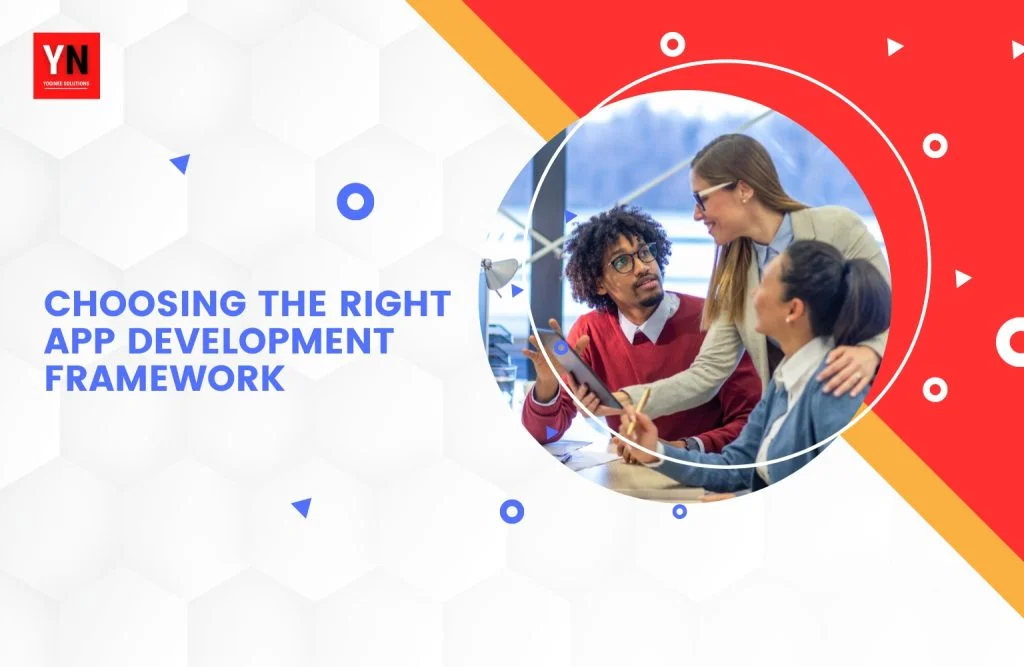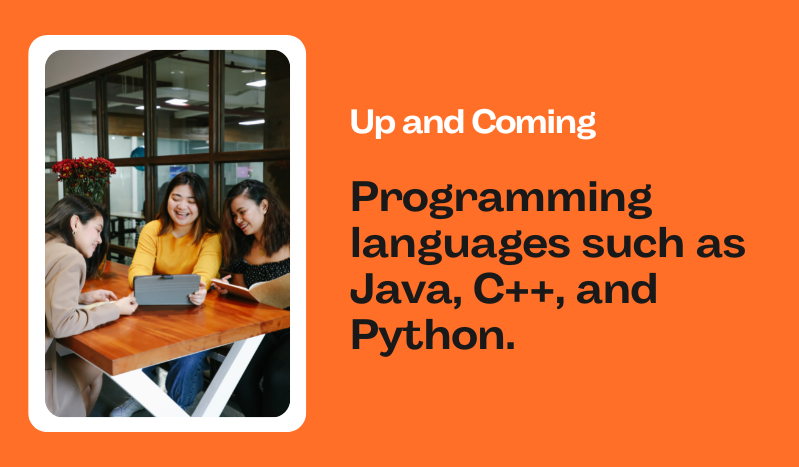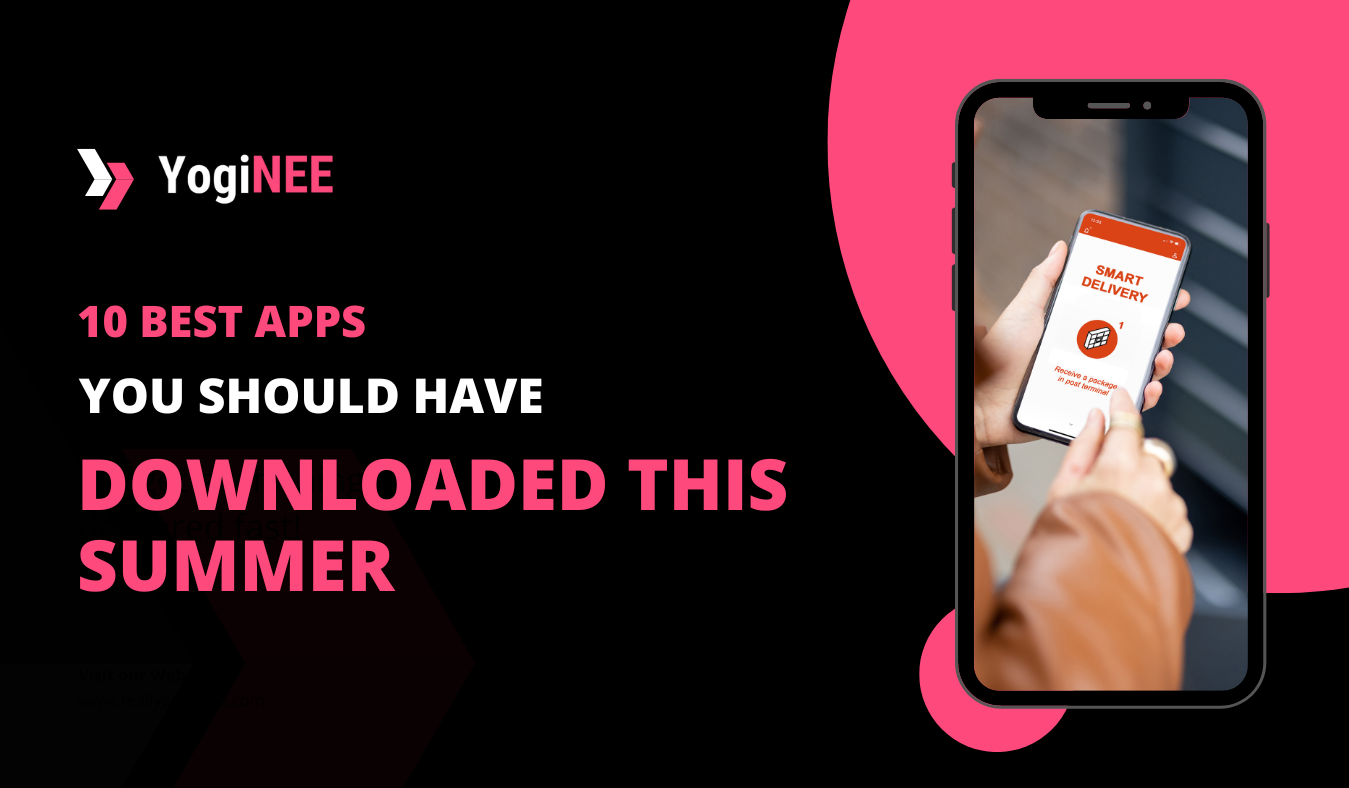In today’s growing world, apps can make any arduous things manageable and can make a massive difference in the success of your project. Want to order a cake, play songs or plan a trip? Anything can be possible with the help of different applications. But do you know how these apps can be fit for a particular platform? This is with the help of frameworks used to develop the apps.
An mobile app development framework is a set of tools, libraries, and guidelines developers use to build applications. It provides a foundation for developers to work from, helping them create apps more efficiently and effectively. With the proper framework, developers can save time and resources, reduce the likelihood of errors, and develop apps that are scalable and easy to maintain. In this blog, we will discuss how you can choose a good framework for your app development. Let’s look deep down into it.
Key Factors To Consider When Choosing An App Development Framework
1. Platform compatibility
The starting factor that should be considered is platform compatibility. The platform you want to develop the app for the framework of the app should be compatible with it. If you want an app to support both iOS and Android, then you have to choose a framework that supports both.
2. Programming language support
Go for the programming languages you are familiar with and the framework you will work on. Having prior experience in a particular language may make working with a framework that supports that language easier.
3. Community support and resources
Choosing a framework with an active community of developers who can provide support and share resources, such as tutorials, documentation, and code samples, is good.
4. Development time and cost
Some frameworks require more time and resources, while others may complete the process quickly and cost-effectively. So do have a look for the development time and resources.
5. User interface (UI) and user experience (UX) capabilities
Consider the framework’s ability to create attractive, intuitive, and responsive user interfaces and user experiences.
6. Security features
To protect your app and its user’s data, you should consider the framework build security features, such as encryption and authentication.
7. Scalability and flexibility
You have to take care of the app growth requirement while selecting a framework. Scalability and flexibility are two major parts of app development as they can increase the reach of the app to a larger audience.
8. Integration with third-party tools and APIs
Make sure the app development frameworks are able to integrate with third-party tools and APIs such as social media platforms or payment gateways.
Types of Mobile App Development
1. Native App Development
These apps are specifically built for a mobile operating system (OS). Thus, you can have native iOS apps or Android mobile apps. The apps are built here with the help of specific tools and programming languages on a single platform. For instant, you can develop native iOS apps by choosing Swift and Objective, while Java and Kotlin can be used for native Android app development.
| Pros of Native Mobile App Development | Cons of Native App Development |
|---|---|
| Better Performance | Take Excess Time |
| Advanced Customization | Higher Cost |
| Enhanced user experience | Lengthy Process of Downloading |
| Greater security | |
| Fewer Bugs | |
| Improved Scalability | |
| Instant Updating | |
| Easy launch to the market |
2. Hybrid App Development
It is a combination app hence the name hybrid, of both native and web apps. The core of the application is made with the help of technologies like JavaScript, Html, and CSS. These are essentially web apps that are packaged as native apps, so they can be downloaded and installed on mobile devices like regular apps.
| Pros of Hybrid App Development | Cons of Hybrid App Development |
|---|---|
| Offline Functionality | Performance Issues |
| Access to Native APIs | Limited Access to device features |
| Lower Development Cost | Compatibility Issues |
| Faster Development Cycle |
3. Cross-Platform App Development
It is the development of an app that is compatible with different operating systems or platforms. In cross-platform development, some of all source code can be shared. This means that the developers can use a single code for the development of the app for multiple platforms. This results in the faster and better result for the company. It can have a broader audience as compatible with multiple devices.
| Pros of Cross-Platform App Development | Cons of Cross-Platform App Development |
|---|---|
| Single Source Code Required | Missing features |
| Faster development | Integration issues |
| Easy Maintenance | UI and UX design Quality |
| Easy Implementation | Update Lag |
4. Web App Development
A web application is an interactive program that is accessed using a web browser and is run on a web server. The user interface of a web app is designed to send data back to the development team that created it. This information provides insights into consumer preferences, usage patterns, and interests that can be extremely helpful for product and marketing plans.
| Pros of Web App Development | Cons of Web App Development |
|---|---|
| Cost-Effective | Reduced Speed |
| Always up To Date | Less Secure |
| Free for Downloading Needs | Website Dependency |
| Runs Easy | Restricted Functionality |

Comparison of Native, Hybrid, Cross-Platform, and Web Apps
| Native App | Hybrid App | Cross-Platform App | Web App | |
|---|---|---|---|---|
| Definition | The apps that made and operated on specific devices Android or iOS. | It is the combination of both native and web applications. | The app is made compatible with the multiple mobile operating systems. | It is the creation of apps that reside on remote servers and delivered to the user’s device over the Internet. |
| Performance | High | Medium | Medium | Low |
| Development Cost | High | Medium | Medium to High | Low |
| User Experience | High | Medium | Medium to High | Low |
| App Store Approval | Required | Required | Required | Not Required |
| Maintenance | High | Medium | Medium to High | Low |
Top Upcoming Programming Languages to Learn and Be Future Ready
List of Top Mobile App Development Frameworks in 2023
1. React Native
It is a framework for building mobile apps using JavaScript and React. It can create an application that can run on iOS and Android platforms with a single codebase written in JavaScript.
Some of the features of React Native are-
- Cross-platform development
- Native component
- Fast performance
- Large community
- Easy to learn
- Third-party support
2. Flutter
Google developed the open-source Flutter framework for building mobile apps. Using a single Dart-written codebase enables developers to create high-performance, cross-platform mobile applications for both Android and iOS. It is simple to make attractive and responsive user interfaces with Flutter, thanks to its reactive programming style and customizable widget library.
Some of the features of Flutter are-
- Rich Animation and Graphics
- Open Source
- Fast Development
- High Performance
3. Xamarin
It is a cross-platform mobile application development framework that allows developers to create for Android, Windows, and iOS using a single codebase written in C#. It uses a shared C# codebase, enabling developers to reuse code across platforms while providing a native user interface and access to native platform APIs. It also provides a set of UI controls that can be used to build the application’s user interface.
Some of the features of Xamarin are-
- Access to Native APIs
- Shared Codebase
- Enterprise Grade security
- Large community
- Xamarin.Forms
- Integration with .Net Framework
4. Swift
Swift is an open-source programming language, meaning its source code is available for anyone to view and contribute to. It has been designed to be easy to learn, with syntax that is simple and expressive, making it a popular choice among developers who are new to iOS and macOS development.
Some of the features of Swift are-
- Fast and Safe
- Modern Syntax
- Open Source
- Playgrounds
- Dynamic Libraries
- Memory Management
5. Ionic
It is an open-source framework for building hybrid mobile apps using the web technologies such as JavaScript, CSS, and HTML. It provides a pre-build UI component, a powerful command line interface (CLI), and a range of tools and services for building, testing, and deploying hybrid mobile apps.
Some key features of the Ionic are-
- Pre-build UI components
- Integrations
- Plugins and Extensions
- Theming and Customization
6. Apache Cordova
It is an open-source framework for building applications using different languages. It allows the developers to build hybrid apps that can be installed and run on multiple platforms using a single codebase. This provides a set of APIs and plugins that allow the developers to access native device features like accelerometer and contacts list from their web apps.
Some key features of the Apache Cordova are-
- Integration with other frameworks
- Access to native device features
- Plugin Ecosystem
- Performance optimization
7. jQuery Mobile
It is an open-source framework for building mobile web apps using HTML5, CSS3, and JavaScript. It provides a set of pre-built UI components and tools for creating mobile-friendly websites that work on multiple devices, including tablets, mobile phones, and desktops.
Some of the key features of the JQuery Mobile Framework
- Responsive devices
- Pre-build UI components
- Cross-platform compatibility
- Touch-optimized
8. Native Scripts
Native Script is an open-source framework for building cross-platform mobile apps using JavaScript, TypeScript, and Angular. Along with access to the native APIs and UI components, the developers can use a single codebase to create mobile apps for both Android and iOS.
Some of the key features of the Native Framework
- Cross-platform development
- UI components and themes
- Live development and debugging
- Performance optimization
- Support for TypeScript and Angular
9. Sencha Ext JS
It is a framework for building cross-platform web apps with rich user interfaces and advanced data management capabilities. It allows the developers to create complex applications using a simple, lightweight framework that is easy to learn and use.
Some of the key features of Sencha Ext JS are-
- Data management
- Rich UI components
- Accessibility
- Build-in testing tools
- Extensibility
10. Onsen UI
It is a cross-platform mobile app using HTML, JavaScript, and CSS. It provides a set of pre-built UI components and tools for creating mobile apps that work across a range of platforms, including iOS and Android.
Some of the key features of the Onsen UI framework are-
- Access to native APIs
- Cross-platform Development
- Performing optimization
- Build in debugging tools
11. Соrоnа SDK
It is a cross-platform mobile development framework that enables developers to build mobile apps and games for Android, iOS, and other platforms using the Lua programming language. It is easy to learn and also provides a complete set of tools and APIs for building rich, interactive apps with high performance and a small memory footprint.
Some of the key features of Corona SDK
- Easy-to-use graphics engine
- Pre-built libraries and plugins
- Access to native APIs
- High Performance
- Rapid prototyping
12. Аррсelerаtоr Titаnium
It is a cross-platform mobile development framework that enables programmers to construct native mobile apps by utilizing web technologies like HTML, CSS, and JavaScript.With the help of Appcelerator Titanium, developers can produce native mobile apps with a single codebase, which can help them save time and money.
Some features of Appcelerator Titanium are
- Access to native APIs
- Cross-platform Development
- Performing optimization
- Build in debugging tools
13. РhоneGар
Using web technologies like HTML, CSS, and JavaScript, developers may construct mobile apps with the help of the open-source PhoneGap framework. Using a single codebase enables developers to create native mobile apps that can operate on different operating systems, such as iOS, Android, and Windows Phone.
Some key features of PhoneGap are-
- Access to Native APIs
- Pre-build UI components
- Build in debugging tools
- Performance optimization
14. Mоbile Аngulаr UI
It is a framework that combines the power of AngularJS and Bootstrap to create mobile-friendly web applications. It makes it simple for developers to make responsive and user-friendly mobile apps by offering a variety of UI components and directives that are specially made for mobile devices.
Some key features of Mobile Angular UI include being-
- Responsive design
- Touch-optimized UI components
- Build in animation
- Integration with other tools and frameworks

How Do I Choose the Right App Development Framework for My Project?
1. Determine the project requirements
So when you start choosing your project requirement, you have to make sure about some things like app functionality, performance, and user interface. This can help you in narrowing the options and choosing the framework that meets your specific needs.
2. Consider the platform(s) for the app
Now the second step is you have to consider the platform you will need to consider for which your app will be developed, such as iOS, Android, or both. This will help you choose a framework that is compatible with the platforms you are targeting for.
3. Evaluate the available frameworks
Research the frameworks that are available, then evaluate them. See for their features, benefits, and drawbacks. This will help you choose a framework that is best for your project.
4. Access the development cost and time
You have to take care of the cost and time while choosing the framework, as it can affect the budget and the time for the other development processes. Based on the location, the time and cost also get changed, so consider seeing it in the beginning to get all the things done in advance.
5. Consider the framework’s scalability and flexibility
The framework should be flexible enough to change and update according to the app’s future requirements. This can also lead to better development that last long for way more than any other. Users are also very important for any business, so to fulfill all the requirements of the user, it should adapt to the user’s needs.
6. Evaluate the security features.
The security of any system is the most important thing in today’s growing world. There are a lot of personal data involved in any development. So to risk it cannot be a good option, though choosing a framework that supports a strong security feature is a must. So do check the security feature to see if it is available or is supported in the framework you are choosing.
7. Check integration capabilities with third-party tools and APIs
Choose a framework that can easily integrate with third-party tools and APIs, such as payment gateways and social media platforms.
8. Look for testing and debugging tools
To make sure the app is working correctly and to find if there is any bug or issues occurring to fix it, a framework that provides the appropriate testing and debugging tool to ensure the problem is fixed.
How Can Yoginee Solution Help You?

Yoginee Solutions is an app development company that can help you choose the right app development framework for your project.. You can contact us 24*7 for a free consultation for any query.
Our experienced developers can also assist by evaluating your project requirements, target platform, and other factors and recommend the best framework for your specific needs. We can also provide you with a detailed analysis of the available frameworks and their features, so you can make an informed decision. Additionally, we can offer insights into emerging trends and technologies in the mobile app development space, ensuring that your app stays up-to-date and competitive in the marketplace. With our expertise and guidance, you can rest assured that your mobile app development project is in good hands.
Conclusion
Choosing the right app development framework is important for the success of your mobile application. With so many options available, it’s important to consider your project requirements, target platform, available frameworks, development cost and time, scalability, flexibility, security features, integration capabilities, and testing and debugging tools. By taking these factors into account, you can make an informed decision and choose the framework that best fits your needs. Also, don’t forget to also keep an eye on emerging trends and technologies, as the mobile app development landscape is constantly evolving.
Still, facing issues with choosing the best framework for mobile app development? Here we, Yoginee, provide you with the best assistance with our qualified team.
Frequently Asked Questions FAQ’S
An app development framework is a software platform that provides developers with tools and resources to build mobile applications quickly and efficiently. It includes pre-built components, cross-platform support, UI elements, data management tools, and integration with third-party services and APIs.
Using an app development framework can offer benefits such as faster development, cross-platform support, consistent UI elements, integration with third-party services, scalability and flexibility, and built-in security features. These advantages can help developers create higher-quality mobile applications that meet user needs and expectations.
Yes, it is possible to switch the framework between the development, and the moment of the project, though it is not recommended to switch due to potential issues such as code compatibility problems, performance issues, and delays in project timelines. It is better to carefully evaluate and choose the right framework at the outset.
Whether Flutter is easier than React Native is subjective and depends on developers’ preferences and experience. Both frameworks have their own learning and advantages, and the choice between them may depend on various factors such as project requirements, target platforms, and team skill sets.





